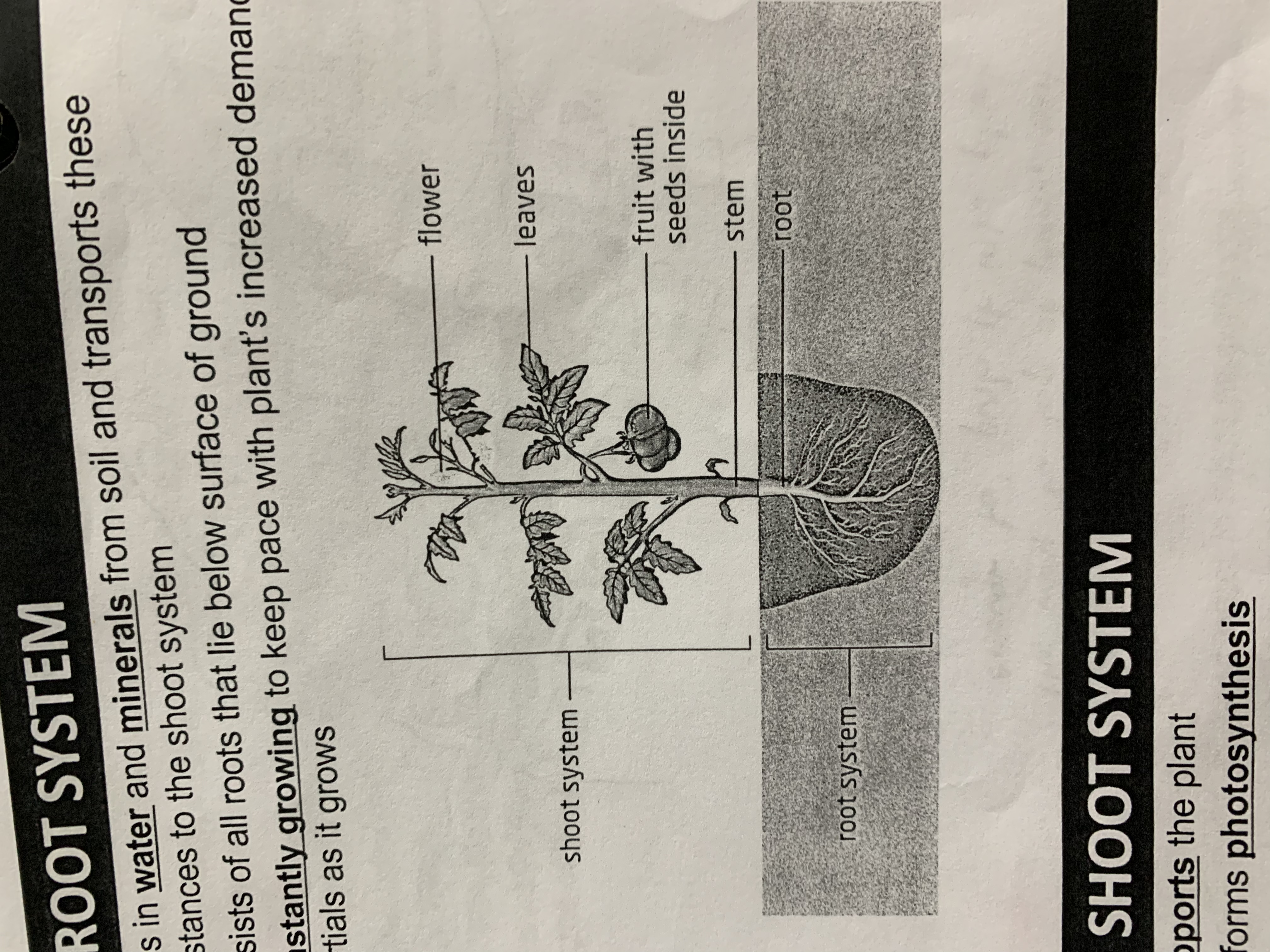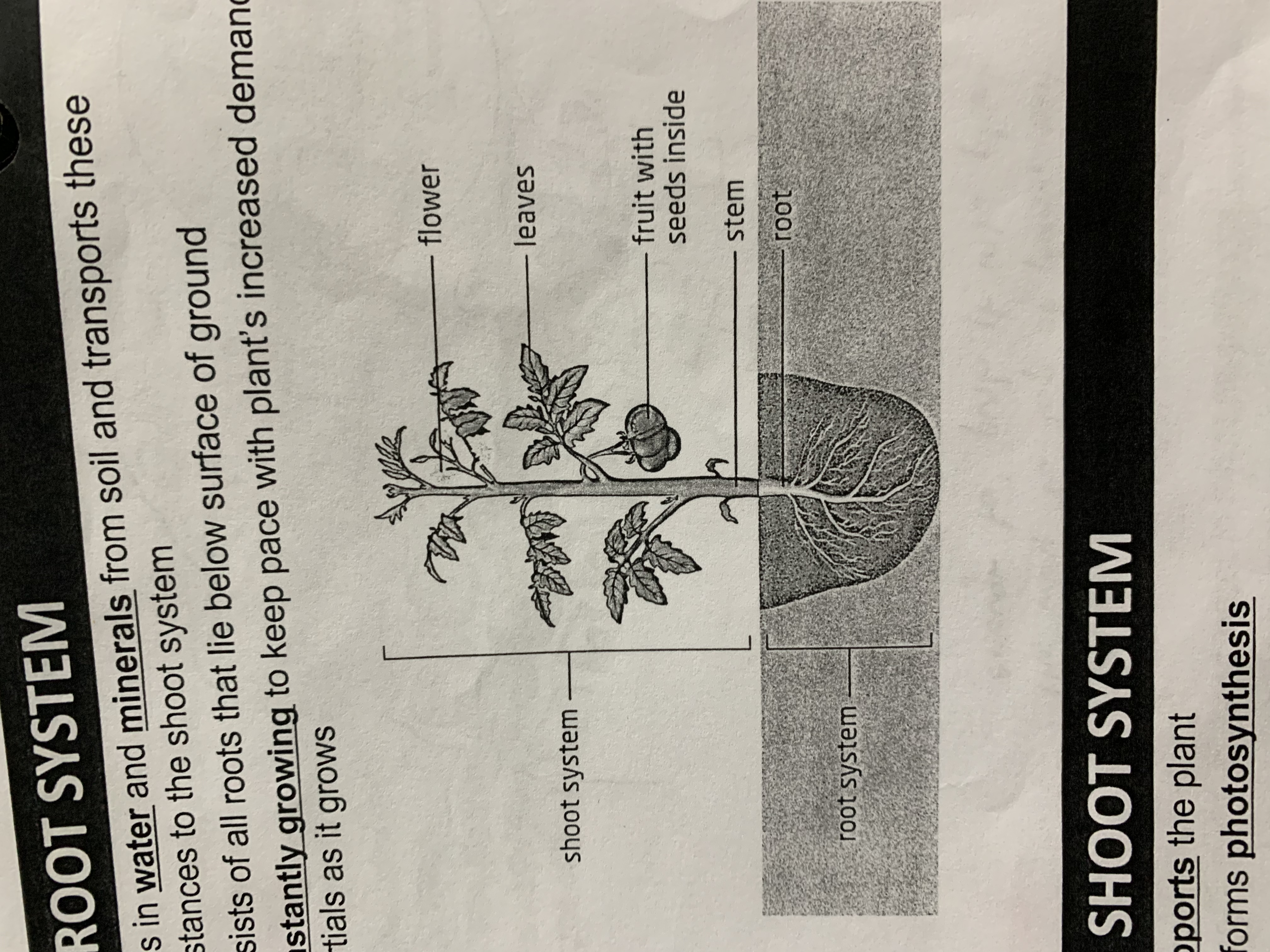Plant Organ Systems
0.0(0)
0.0(0)
Card Sorting
1/7
There's no tags or description
Looks like no tags are added yet.
Study Analytics
Name | Mastery | Learn | Test | Matching | Spaced |
|---|
No study sessions yet.
8 Terms
1
New cards
System
A system is a group of tissues and organs that perform specific functions. In plants, systems work together to maintain a constant flow of fluids, nutrients, and hormones from one part of the plant to another. The two main organ systems in plants are the root system and the short system.
\
Cell —> Tissue —> Organ —> Organ System —> Organism
\
Cell —> Tissue —> Organ —> Organ System —> Organism
2
New cards
Root System
A plant’s root system consists of all the roots that lie below the surface of the ground. It is responsible for taking in water and minerals from the soil and transporting these substances to the shoot system. It is constantly growing to keep pace with the plant’s increased demand for materials as it grows.
3
New cards
Shoot System
The shoot system is responsible for supporting the plant, performing photosynthesis, and transporting water, nutrients, sugars. The root and shoot systems are connected via vascular bundles (xylem and phloem).
4
New cards

Draw a diagram labelling the root and shoot systems.

5
New cards
Moving Water in Plants
Plants can survive without soul, but not without water. If there is too little water in the soil, photosynthesis cannot occur. Additionally, nutrients cannot be taken up by the roots. This is because the nutrient molecules must be dissolved in water in order to be absorbed and move up the xylem in the form of sap. If there is too much water in the soil, it means the spaces between the soil molecules are filled with water, and there will not be enough room for oxygen. The root cells will not get enough oxygen for cellular respiration. \*Hydroponics: growing plants in a nutrient solution instead of soil
6
New cards
Movement of Water Through the Roots
1. Water and nutrients are transported into the root by osmosis (the epidermal cells of most types of roots grow small extensions of their cell membranes called root hairs, which increase the total surface area for the absorption of nutrients)
2. Water and nutrients move toward the xylem at the centre of the root by travelling through or in between cells until they reach the endodermis
3. The endodermis is surrounded by a waxy, waterproof substance that prevents water from passing in between the cells of the endodermis. Instead, water and nutrients pass through the semi-permeable cell membrane of the endodermis cells
4. Water and nutrients are pushed into the xylem vessels
* The movement of the water through the roots is affected by root pressure and transpiration
7
New cards
Root Pressure
Root pressure pushes water from below, up through the xylem and against the force of gravity. It is created under certain conditions, such as at night when transpiration is low and soil is very moist. As root cells bring minerals no to the xylem, the mineral concentration in the xylem increases. The high concentration of minerals increases the tendency of water to diffuse into the xylem by osmosis. As water flows in, root pressure builds up in the xylem vessels, which forces fluid up the xylem. However, root pressure is not strong enough to move water all the way to the top of a tree, for example.
8
New cards
Moving Nutrients Through Plants
Photosynthesis produces glucose, which is then used or combines with other molecules to make sucrose. Sucrose is soluble in water and is the main molecule distributed to other parts of the plant through the phloem as sap. Sucrose that makes its way to the roots is converted to starch and stored for later use. When the stored starch is needed, it must be converted to sucrose before transport because starch is not soluble in water and thus cannot be transported through the stem.